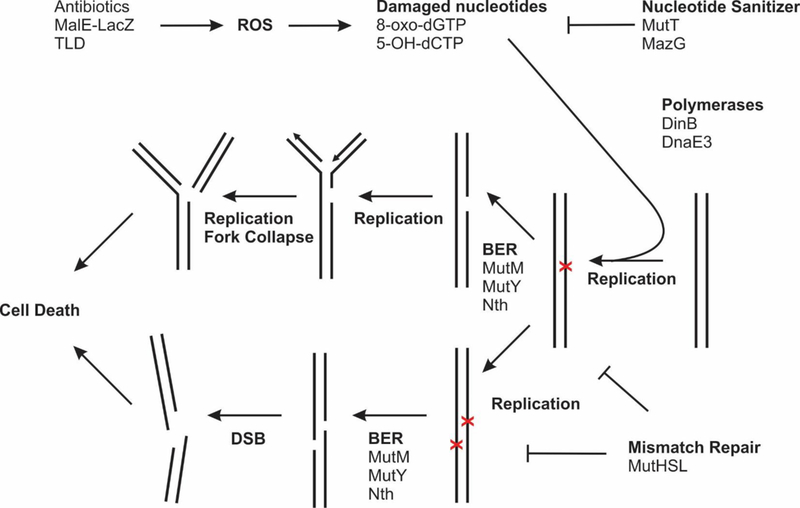Fig. 3.

Model of BER-mediated cell death of oxidized nucleotides. Various lethal stresses induce ROS, which damages the nucleotide pool and nucleotide sanitizers such as E. coli MutT and mycobacterial MazG act to hydrolyze them. Damage nucleotides can be incorporated into the genome during replication, particularly through error-prone polymerases DinB and DnaE3 which have a higher affinity for oxidized nucleotides. The mismatch repair system repairs these lesions shortly after replication, protecting the cell. The BER pathway attempts to repair these lesions and generates SSBs as intermediates. If hit by a replication fork, a SSB would cause the fork to collapse and generate a DSB. Alternatively, clusters of SSBs are opposing strands can become a DSB. An unrepaired break is lethal to the cell.
